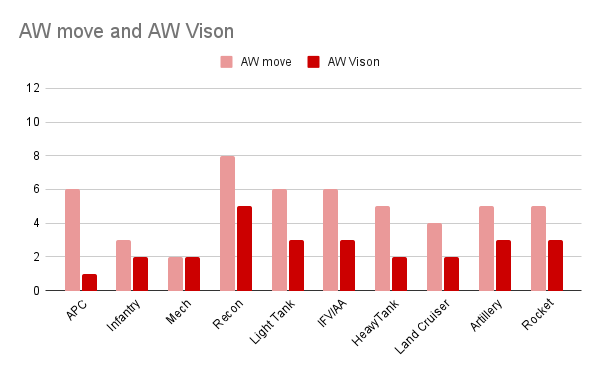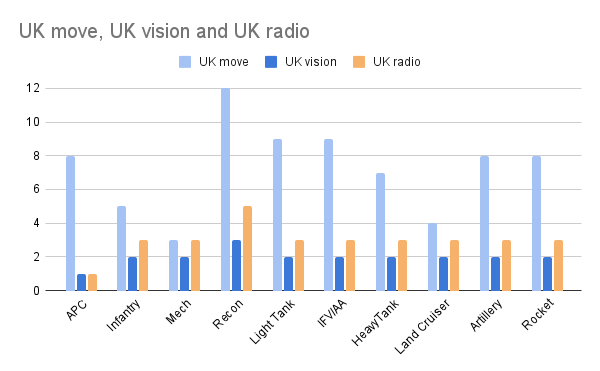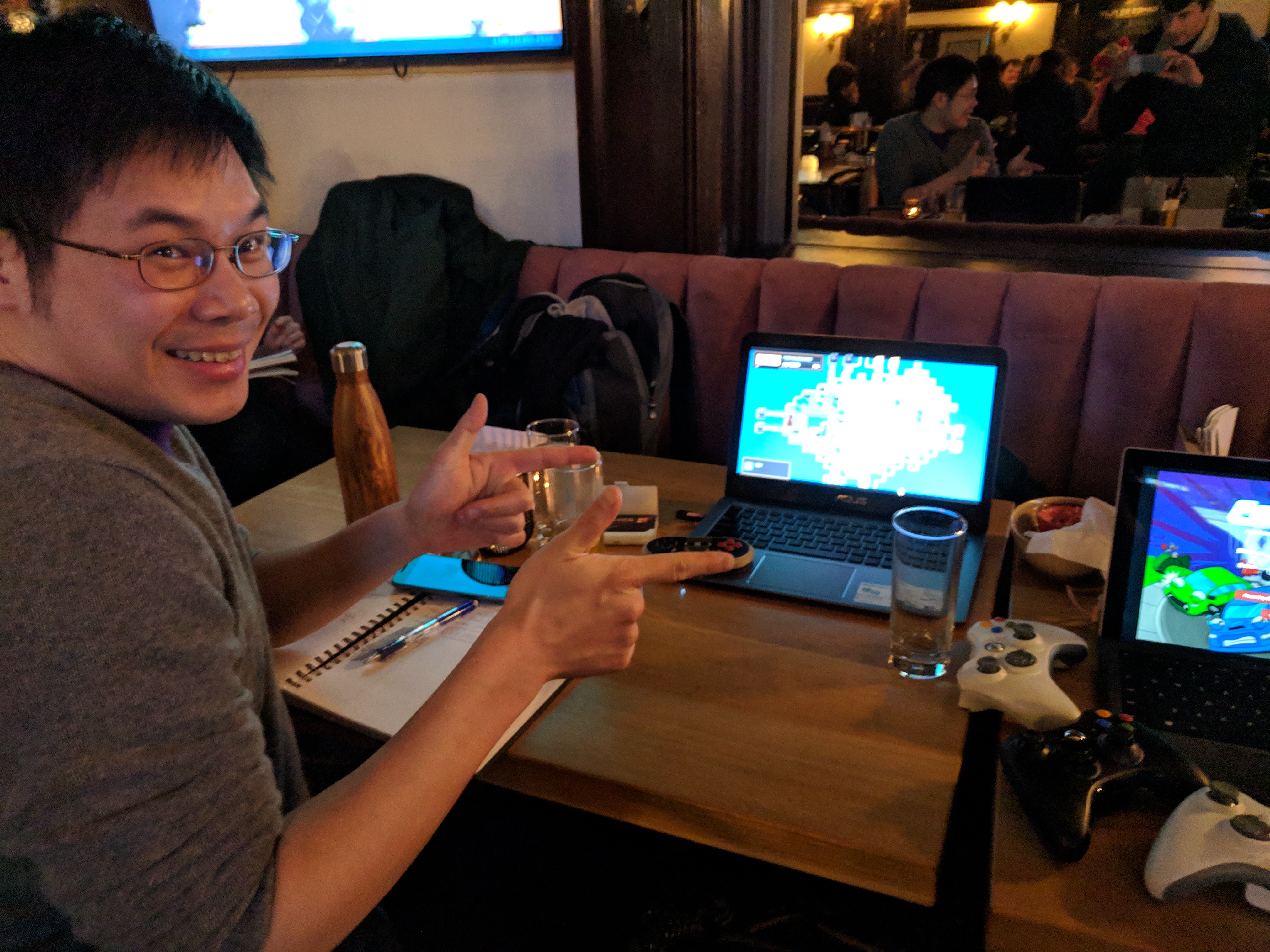ÜBERKRIEG
A turn-based strategy game with an innovative radio communication system.
Personal Project
Role: Primary Developer
Engine: Game Maker Studio (Originally 1, later migrated to 2)
LINKS
Devlog (currently inactive due to refactoring)Playtest records
A SPIRITUAL INVERSION
Although mechanically inspired by the Advance Wars series, Überkrieg is conceptually opposite. While Advance Wars prioritizes simplicity and accessibility, Überkrieg aims to maximize complexity, offering players a more expressive range of tactics.
The core principle of complexity is most clearly expressed by Überkrieg’s unique radio communication system. Below is a rough but hopefully informative video explaining how it works.
DESIGN STRATEGIES
Überkrieg is built on a structured design thesis that defines its core concepts, constraints,
and guiding principles. These elements drive the design process and provide the goals and heuristics
used to evaluate design choices. Below is a condensed list of these design goals and heuristics.
In the next section, I'll discuss how they relate to the execution of specific game mechanics.
You can also access an abridged version of the original document here:
Überkrieg Design Thesis
DESIGN GOALS & HEURISTICS
- Increase core complexity deliberately - not to “fix” or “improve”, but to create something fundamentally distinct.
- Opt for an unconventional approach by restricting the design spaces for combat and resources, and focusing instead on mobilization and information.
- Keep design concise and coherent - simplify as much as possible while preserving added complexities.
- Prioritize tactical appeals by emphasizing flexibility, adaptability, risk-taking, and dynamic systems with more immediate feedback.
- Increase mutual blindness to limit available information, enhancing the player's ability to conceal details from opponents and increase the value of information through scarcity and strategic intent.
- All decisions should be justified in at least two ways, ensuring that every design element is interconnected, giving the entire system a cohesive gestalt quality.
- Focus on qualitative rather than quantitative characteristics.
- Design for high-contrast mechanics and balance.
- Prioritize design elements with the toughest constraints first, often addressing UI issues before game mechanics and narrative elements.
- Avoid the addition of new parts or decision points whenever possible.
- Assume that for the system to be sufficiently complex, evaluating it solely through mental analysis or intuition would be insufficient. Allow playtesting to drive the design process.
EXECUTION
Radio system
- Creates new types of dependencies between all units and properties, increasing complexity without adding new material types or decision points.
- Allows for visible and explicit weak points in the body of an army, increasing the importance of intelligence and enabling high-risk tactics, allowing players to take bold actions with significant consequences.
- Increases the intensity between occupied and unoccupied spaces, amplifying the significance of both information and position. This provides players with more meaningful choices on how to use space for gathering intelligence and projecting or concealing power.
- Provides additional utility to all unit types, expanding tactical options.
Increasing move and firing ranges
- Increases contrast of unit movement against vision and radio ranges. This is especially important to drive home that units are meant to occasionally leave radio contact on purpose.
- Increases complexity by indirectly increasing the size of maps, expanding state-space and granularity of coverage (the number of spaces a unit can interact with).
- Augments the consequence of breakthroughs along battle lines.

Advance Wars move-vision ranges

Überkrieg move-vision-radio ranges
Flattening of radio and vision ranges
- Uniform radio ranges make it easier for players to develop an intuitive sense for positioning units within radio contact range while allowing specific units to stand out.
- Keeps vision and radio ranges as short as possible against move and firing ranges while allowing certain units to stand out by making their range differences more noticeable.
- Base vision ranges are set to 2 because it is the shortest that still allows reduction by environmental effects such as weather or smokescreens.
- Base radio ranges are set to 3 so they're materially larger than base vision ranges.
.png)
Changes to APC (Armoured Personnel Carrier)
- APC is made a command unit to resolve the issue of "what happens when an officer enters an APC," circumventing possible UI problems and streamlining the unit's role. This also allows the APC to move and support units during the opening phase, enhancing early-game flexibility and strategic positioning.
- Increasing the APC's carrying capacity from 1 to 2 expands its unload patterns, further broadening its tactical options while enhancing its ability to move infantry units, improving the pace of the game.
PURPOSEFUL DEVIATION
As I am someone heavily influenced by Nintendo’s design sensibilities, Überkrieg's core design strategy of
increasing complexity might seem counterintuitive. But that’s where the design process led me, so I stuck with it.
I also found reassurance in how Nintendo would occasionally break from their own conventions. Animal Crossing was
a notoriously difficult concept to explain and resisted being boiled down into an elevator pitch. Steel Diver exists
because Mr.Miyamoto was fascinated by the massive 44-button controller for Steel Battalion and wanted to explore something similar!
A key part of Überkrieg's design strategy was recognizing and accepting the consequences of increased complexity,
and evaluating them on their own terms. Überkrieg was never meant to be a “better” or an “evolved” version of Advance Wars,
but rather a reconstruction and exploration of the underlying design elements, and more importantly, the design process itself.
ÜBERKRIEG: A PERSONAL JOURNEY
I first started Überkrieg in 2011, paused, then restarted it in 2016 during a particularly challenging period in my life.
That holiday season, Game Maker Studio was just $12, something I could afford. For a long time I worked on the game alone.
It gave me structure and a sense of purpose, helping me organize my time and priorities. As the project grew, I naturally
started engaging with people, bringing my game to events like Full Indie and Indie Pod, attending conventions, recruiting
artists, hosting playtests, and immersing myself in Advance Wars' online community. Überkieg became a bridge, connecting me
to new friends and even some old ones! Maybe it’s dramatic to say, but this project probably saved my life. Over the past
few years, I’ve found a team of friends who are all working hard to help me finish it, along with many other occasional
contributors.
Progress has been slow but persistent!

Überkrieg at Full Indie, Picture taken by friend Tom Arnold